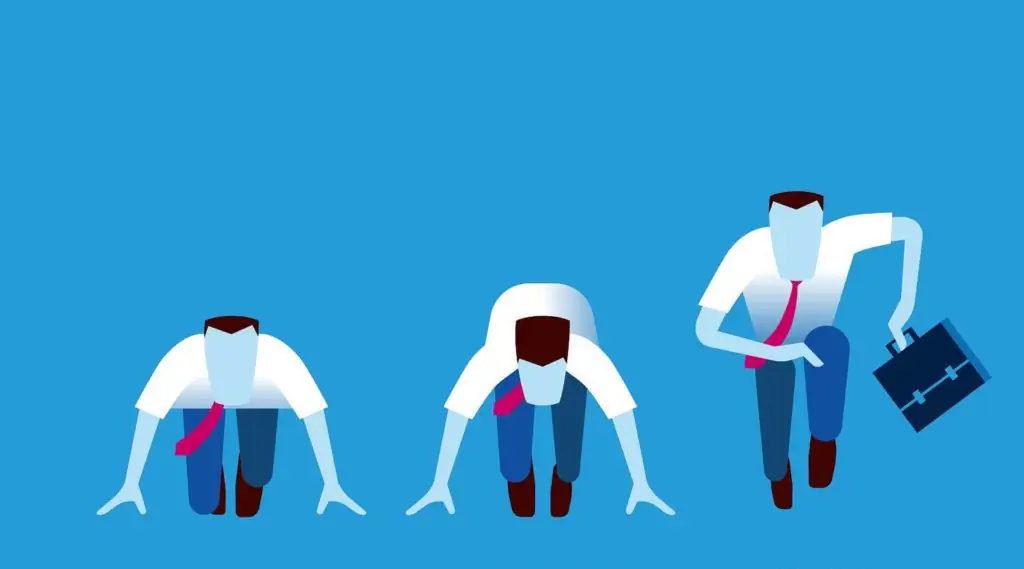2025 Author: Howard Calhoun | [email protected]. Last modified: 2025-01-24 13:10:37
Collegiality is a specific managerial method by which the functions of managing a certain organization, institution or even an entire industry are assigned not to one specific person, but to a group of appointed or elected persons who have the same voting right.

History of collegiality
Turning to the history of this concept, you can see that it originates from the Great October Revolution, when the meaning of the word "collegiate" was equated with the universal method of government, up to the army. However, since 1918, Lenin launched a struggle against such an understanding of collegiality and chose the direction of one-man command.
Today, collegiality is a defining principle in the organization of the activities of various bodies, including the judiciary. At the same time, the so-called “principle of unity of command” must be strictly implemented in any operational apparatus.
The unity of collegiality and unity of command inmanagement
The principle of collegiality and unity of command is implemented in the direction of overcoming authoritarianism and subjectivity in managing, for example, the pedagogical process. In general management activities, it is very important to rely on the knowledge and experience of colleagues with the appropriate organization of their activities, aimed at developing management rules with subsequent discussion and adoption of optimal decisions.
Interaction of collegiality and unity of command

In this aspect, collegiality is not an exclusion of personal responsibility of individual members of the team for the work entrusted to them. Through unity of command, from a managerial point of view, discipline and order are ensured with a clear delineation and observance of the powers of all participants in any process.
Collegiality has a high priority at the stage of discussion with subsequent decision-making. The need for unity of command arises at the next stage - the implementation of decisions made earlier.
In management, unity of command and collegiality is a reflection of the unity of opposites. So, with the help of unity of command, it is possible to achieve efficiency in the execution of decisions, and some “slowness” is characteristic of collegiality. Thus, when carrying out tactical actions, it is advisable to use unity of command, and for strategic actions, the described method of management.

Principle of collegiality
Under the principles of management are understood the fundamental patterns, ideas and rulesbehavior of managers at various levels for the implementation of managerial functions. These are certain requirements and norms that guide the employees of the system, including the leadership of the organization.
Postulates in management
The basic principles of management suggest:
- Skillful use and combination of collegiality and unity of command. At the same time, collegiality provides for the adoption of a collective decision based on the opinions of leaders at various levels.
- Scientific validity in management. This is a principle, the use of which provides for the implementation of all management actions based on the use of approaches and scientific methods. Based on them, he must meet the basic requirements of science.
- Planning is a principle that establishes the main directions, tasks and plans for the development of the organization for the future.
- Combination of responsibility, rights and obligations. Within the framework of this principle, each individual entity in the organization can be endowed with certain powers and be responsible for the performance of the tasks assigned to it.
- Motivation is represented by the principle that the effectiveness of the program of motivating and encouraging people to work by achieving the goal set for the individual and the organization depends on the thoroughness of the implementation of the system of punishments and rewards. At the same time, it is a combination of external and internal forces. They encourage a person to take some action. This defines the boundaries and formsactivities that give motivation an orientation with a focus on achieving specific goals. It also influences human behavior through the use of many factors that can change under the influence of feedback from the individual.
- Stimulation is the process of encouraging people's motivation. It is one of the means by which motivation can be directly carried out.
- Democratization of management is represented by the principle of participation of all employees in the management of the enterprise. This principle of collegial activity ensures equal and active participation of employees and all other members of the team in it.
- Systemacity is a principle that implies a close relationship between economic, socio-cultural and technological management decisions. It is the basis for decision-making and interaction. Consistency is a unity that has a natural disposition.
-

principle of collegiality and unity of command Efficiency is based on the principle of achieving goals in a fairly short time and with little loss.
- The main link is the principle of solving and finding the most important task among many similar ones.
- Optimality serves as the principle of correlation of centralization with democratization, the combination of the creative activity of lower-ranking workers and direct management (known as "democratic centralism").
- Responsibility and enforcement of decisions are the principle of verification andconstant observations for the purpose of supervision or verification.

Conclusion
It should be noted that collegiality can increase the objectivity and validity of all decisions made. However, their adoption can be rather slow. Therefore, the most correct solution may be to combine collegiality with unity of command.
Recommended:
The main functions of the personnel development subsystem are: working with a personnel reserve, retraining and advanced training of employees, planning and monitoring a business c

The main functions of the personnel development subsystem are effective organizational tools that can improve the qualifications of an adept employee to an internal, master, authority, mentor. It is in the organization of such growth of employees that the skill of a cool personnel worker lies. It is important for him when the subjective “feel for promising personnel” is supplemented by an objective deep knowledge of the methodology of personnel work, which is deeply developed and regulated in detail
Types of personnel assessment. Personnel Management

Checking personnel today - in the face of fierce competition - business leaders pay increased attention. The success of the company directly depends on the criteria by which the staff is formed and how effectively their potential is used. And good leaders understand this. In connection with the demand, dictated by the realities of the time, higher education institutions began to produce specialists of a new level - personnel managers
Staffing of the personnel management system. Information, technical and legal support of the personnel management system

Since each company determines the number of employees independently, deciding what requirements for personnel it needs and what qualifications it should have, there is no exact and clear calculation
Personnel - what is it? Types of personnel, training and management

The totality of workers of different professions, qualifications and categories employed at the enterprise is called "staff". What is personnel in the broadest sense of the word? How important is the role of each employee in the process of organizing the work of the enterprise?
Concept of personnel management. Personnel classification

What is the concept of personnel management? Four main systems. How to form your own concept, what are its foundations, the conditions for development? Examples of personnel classification

